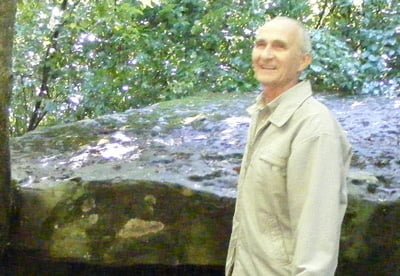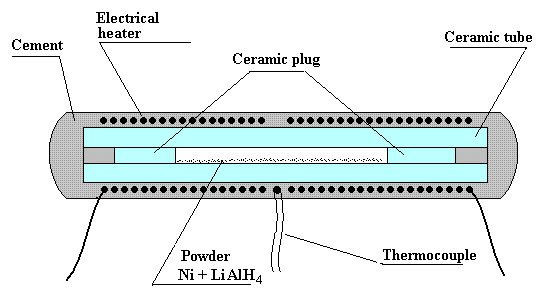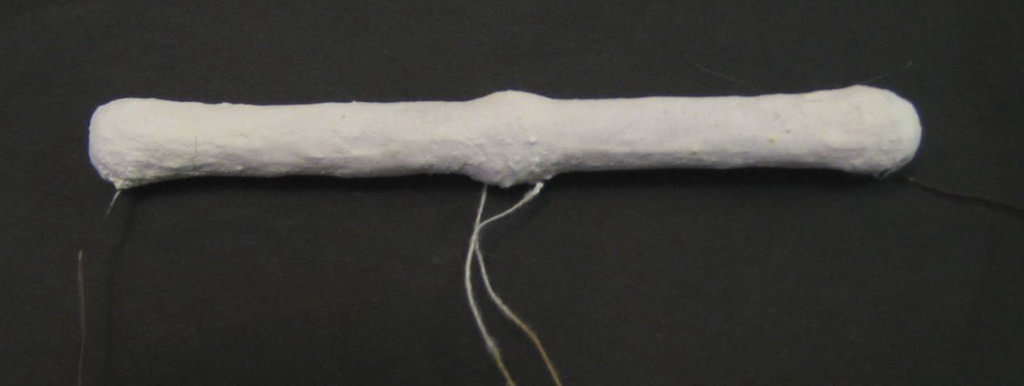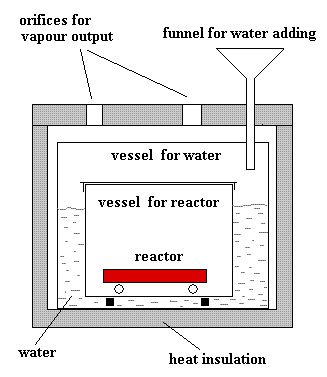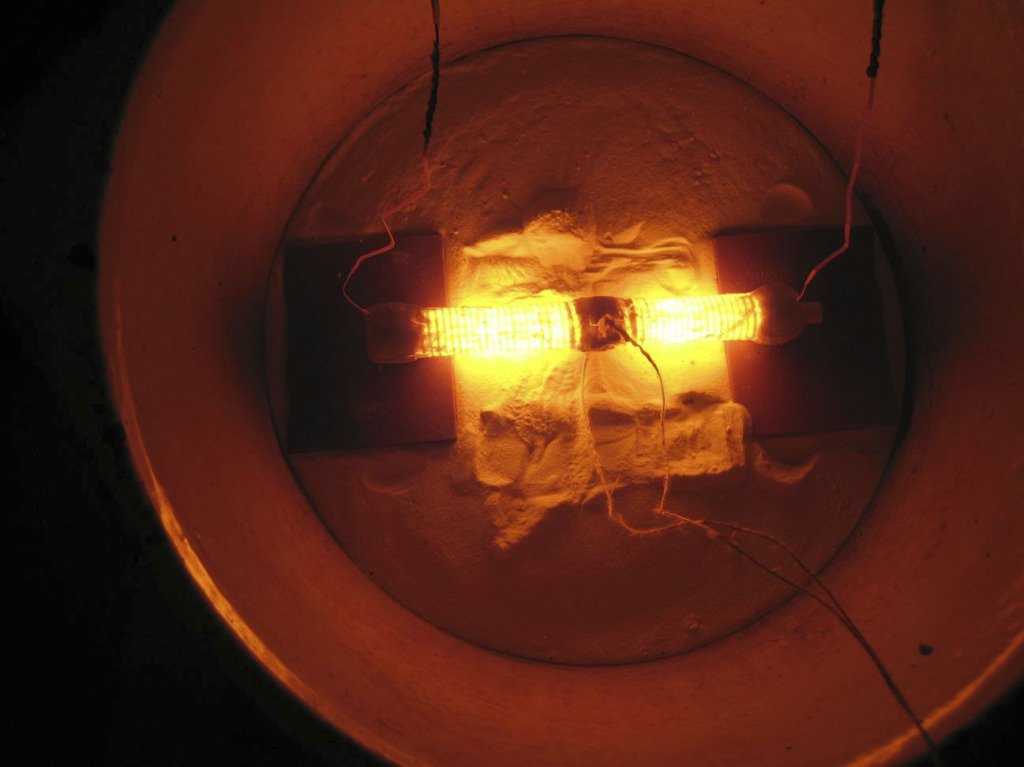The following is a paper prepared by David J French in support of a Poster Presentation at ICCF-18, the 18th International Conference on Cold Fusion held in Columbia, Missouri over July 21 – 27, 2013. The paper as reproduced on ColdFusionNow is divided into two parts. Part 2 is available here. Part 1 now follows.
Patenting Cold Fusion Inventions before the US Patent and Trademark Office – USPTO
Part 1
This paper is about the challenge of obtaining a patent before the United States Patent and Trademark Office – USPTO. The USPTO has developed a reputation for refusing applications directed to “Cold Fusion” technology. There is a general belief amongst the Cold Fusion community that some staff members at the USPTO have been hostile to granting patents in this field. In fact, the experience of almost every applicant in this field is that Examiners have a strong prejudice against granting patents for Cold Fusion inventions.
However I had some personal exchanges with the USPTO in the fall of 2012 that ended with a declaration that the USPTO will issue properly drafted patents which are directed to new technology in the field of Cold Fusion/generation-of-unexplained-excess-energy if accompanied by a proper disclosure and a demonstration that the asserted procedures will work as represented. The communication from the USPTO stated:
“As you noted in the email, Cold Fusion or Low Energy Nuclear Reactions (LENR) is the subject of intense study and interest of many. Clearly, further investigation into this area could be useful and will hopefully one day will provide a major source of energy.
“You note that the USPTO can require patent applicants to provide evidence that the invention works and that the disclosure is sufficient to enable others to make and or use the invention. The United States Code requires as much, and defines the requirements for patentability in 35 U.S.C sections 101, 102, 103 and 112. Particularly, the enablement requirement, which refers to the requirement of 35 U.S.C. 112, first paragraph that states the specification, must describe how to make and how to use the invention. The invention that is defined by the claim(s) of the particular application is the invention that one skilled in the art must be enabled to make and or use. (See MPEP 2164) This is the requirement of law in order to obtain a valid patent. These requirements are applied to all inventions whether they are ground breaking technology or incremental improvements.
“We also thank you for your suggestion to have a message that “The USPTO is open for business in the field of Cold Fusion for properly prepared patent filings” before the Cold Fusion revolution arrives. This is already the case. Any non-provisional application, including those in the area of Cold Fusion, is eligible for patenting also long as it meets the requirements of 35 U.S.C. Sections 101, 102, 103 and 112.” [end quote]
The basic requirements for the granting of a patent as referenced are that an application must address:
1. Proper subject matter for patenting,
2. A technology that works in the sense of being useful for humanity in some way,
3. A disclosure that will enable knowledgeable but uninventive workers to reproduce the invention, and
4. A stipulation (in the form of one or more Claims) as to what will be controlled by the exclusive rights to be granted, rights that must apply only to things that are new.
Many patent attorneys add a further requirement namely that the patent must be directed to something which is inventive, or in the terms of the statute, a feature that is “not obvious”. Non-obviousness is judged in view of what has been known previously. I like to include that requirement as really being a sub-characteristic of being “new”.
New US Law from March 16, 2013
As from March 16, 2013 the requirement for being “new” under US patent law is that the thing being patented must not have been “previously available to the public”. This means previously available anywhere in the World, at any time, in any manner whatsoever. The United States has finally joined Europe and the rest of the world in defining patent entitlement in this manner. If you think about these words, you will probably agree that this means that your invention must be “pristine on the planet Earth”! Never having been made available to the public anywhere not only requires that your applied technology be new, but it also must not be obvious in view of what was previously known. That is how inventive character or non-obviousness can be included under this new definition and requirement for patent novelty.
Patent novelty item 4 above, is a big issue. It cannot be addressed in this paper. But the remaining numbered items are relevant to “cold fusion” inventions and will now be addressed.
Subject matter for patenting – Science vs Technology
Patents are about technology rather than scientific discovery. In Europe under the European Patent Convention (EPC Article 52) and under the international Patent Cooperation Treaty – PCT inventions must be “susceptible of industrial application” in order to be patentable. This expression is further defined in EPC Article 57 which provides: “An invention shall be considered as susceptible of industrial application if it can be made or used in any kind of industry, including agriculture.” This emphasizes that patents are not about theories. Patents are about technology. The difference between science and technology is that science delivers understanding – from the Latin scienter, “to know”, and technology delivers something that is useful for human beings. Often, technology is the application of science.
In the past, it has been thought in the United States that there must be something tangible or mechanical about an invention. However, the US definition for something which is patentable, called “patentable subject matter” is: “any new and useful process, machine, manufacture, or composition of matter, or any new and useful improvement”(35USC101). In the last 20 years we have seen an explosion of patents in the world of business activities and relating to human behavior in general. These patents have issued on the premise that inventions in these fields can be characterized as “processes”, now often called “methods”. The argument is still ongoing as to whether this opening-up of patenting to non-tangible arrangements that focus on human behavior, eg “business methods”, fits within the patentability requirements of the US statute. But for purposes of the Cold Fusion community, patenting has to focus on a technical, that is a mechanical or chemical, arrangement or procedure that is useful and reproducible.
The next two issues address why Cold Fusion patents have been encountering serious difficulties at the USPTO.
Utility and Disclosure Requirements
For an invention to be useful, it must “work”. This means that it has to deliver a useful result.
Not only does the invention have to work but the application has to describe how others can build something useful that works. The written document accompanying a patent filing must include a description that will “enable” competent workmen, after the patent expires, to carry out the instructions and obtain the promised useful result. The disclosure must “enable” others to obtain the benefits of the invention. The disclosure must provide a “recipe” that is complete.
If the instructions are inadequate, then a patent application will be refused. If the patent slips through it can still be canceled before a Court on the grounds that it should not have been issued in the first place.
You must write the Specification so that your invention may be practiced by a Person Having Ordinary Skill in the Art (POSITA) without undue experimentation. This individual is assumed to be knowledgeable, but he/she is not inventive. If the invention either intrinsically does not work, or the instructions to create it are inadequate, then a patent application will be refused.
What are the lessons to be learned from these points? One lesson is that it is a false triumph to slip something past the Patent Office. Any oversights of an Examiner can be addressed by a Court. The test of litigation is a very hot furnace. Only the sturdiest steel can take the heat. So you want to obtain your patent on a legitimate basis and do it right at the very beginning. Consequently, if you assert that you have a method for delivering unexplained excess heat based on what you believe to be a “Cold Fusion effect”, you must be absolutely certain that you are achieving this result. Furthermore, you have to provide a description that will reliably allow others to achieve the same result.
Warning: there is a deadline to get the “story” right in the Disclosure. Once a final patent application has been filed, the “story” contained in the disclosure cannot be changed. You can change your claims as long as they are restricted to things already described in the original filing. But you cannot make changes to the text in order to upgrade your description, your “recipe”, for making the invention work.
Reproducibility
The history of ColdFusion is shot through with examples of intermittent replication right from the very beginning, starting with Fleischmann & Pons. I am not focusing on the failure of various illustrious institutions to duplicate the Fleischmann and Pons test results. Martin Fleischmann and Stanley Pons had trouble duplicating their experimental demonstrations themselves. James Patterson in the 1990’s until his death in 2008 represented that he produced remarkable results from plastic, glass or ceramic micro-spheres coated with various layers of hydrogen-saturated metal, including both nickel and palladium. That was with his first batch of spheres. But when he subsequently prepared further batches he did not get the results he got before. Patterson obtained patents anyway, several in the US including No US 5,607,563 entitled “System for Electrolysis” issued on March 4, 1997, now expired. Other Patterson patents can be located through the hyperlinks in this reference. But these were never tested in Court. Shaky results have arisen in laboratory results around the world over the last 23 years. They are still happening today. This is part of the part of the mystery of this science. How does this affect patenting?
It is pretty clear that the USPTO should not be issuing patents for things that do not work. A little thought is required as to whether they should issue patents for things that work only some of the time. There are many technologies that might fall into this latter category. When you strike a flint on a bar of iron to create a spark and start a fire, it does not work with every blow. But the invention is profoundly useful. Similarly, in the field of pharmaceuticals medicines may exist that only work some of the time, but are well worth administering when there are no other alternatives and there is a real prospect that they may work in an individual case. Vaccines fall into this category.
On the other hand, I would not consider a heart valve to be useful if it has any substantial incidence of failure once installed in a patient. I am referring to failure due to a design fault such as accumulating scar tissue. Still, patents have issued for mechanical hearts that have kept Patients alive for only a limited period of time. In truth, the utility of an invention covered by a patent is highly dependent upon the representations made in the patent disclosure document as to what the invention will achieve.
This is leads to a big message. The utility requirement under patent law does not require that an invention be better or superior. It does not require that it deliver high-value. Anything that is “useful” to some degree will pass the utility requirement. But if an inventor extols the benefits of their invention, they are creating potentially serious problems for the validity of their patent. If you represent that your invention delivers a certain result claiming exclusive rights in such an outcome, and it does not indeed deliver that result, then such claims might possibly be invalidated for failing to meet the utility standard. At a minimum such defaults will be emphasized before a jury. You set the standard yourself in claiming rights over something that you say you can deliver. The conclusion is: Do not try to claim rights in more than your invention will deliver! In fact, as a general policy it is preferable to avoid making any more representations than the minimum needed to obtain a patent grant.
The utility requirement for an invention is met if you simply state an instance where it can be used to produce a useful result of even modest value. Do that, but go no further.
Example of Success
It is time for an example. Assume you have an experimental setup that produces unexplained excess heat. Rather than representing the technology as a solution to mankind’s energy requirements, it is sufficient to describe your invention as an assembly of hardware which demonstrates how excess heat can be produced from an artful combination of Palladium and deuterium. Just because you have described your invention as a demonstration apparatus does not mean that your patent claims cannot cover the use of the same apparatus to supply heat for your house indefinitely in the winter or heat for your air-conditioning system indefinitely in the summer, so long as the same principles are being used in the scaled-up system. But do not promise house heating and air-conditioning unless you also disclose how to build what is needed to do the job.
Here is an example of a successful patent granted on an invention for which Melvin Miles was a co-inventor:
United States Patent 7,381,368 issued June 3, 2008
Title: Palladium-boron alloys and methods for making and using such alloys
Inventors: Miles; Melvin H. (Ridgecrest, CA), Imam; M. Ashraf (Great Falls, VA)
Assignee: The United States of America as represented by the Secretary of the Navy (Washington, DC)
And here are the key claims:
Claims:
1. An alloy comprising palladium and boron;
wherein at room temperature the alloy has a two-phase structure, comprising crystallites of a first phase and crystallites of a second phase;
wherein both the first phase and the second phase are solid solutions of palladium and boron;
wherein the crystallites of the first phase and the crystallites of the second phase are free of hydrogen;
wherein the first phase and the second phase have the same crystal structure;
wherein the first phase and the second phase have different lattice parameters;
wherein the alloy is free of palladium-boron intermetallic compounds; and
wherein the alloy is free of hydride compounds.
11. The alloy of claim 1, wherein said alloy is in the form of a membrane.
12. A method of hydrogen purification comprising the steps of: providing the membrane of claim 11, providing a gaseous sample comprising hydrogen on one side of the membrane, providing a vacuum on the other side of the membrane, and allowing the hydrogen to pass through the membrane.
13. The alloy of claim 1, wherein said alloy is in the form of an electrode.
14. A method of generating energy comprising the steps of: providing the electrode of claim 13, connecting the electrode to a cathode, immersing the electrode and the cathode in water containing deuterium, and applying a current to the electrode and the cathode.
Based on the above claims, anybody who has possession of the alloy described by claim 1 and uses it for any industrial purpose will violate the claim. There are multiple uses for this alloy. Claim 12 addresses using the alloy as a hydrogen-pass filter to permit hydrogen to enter a vacuum. Claim 14 addresses a clear example of generating energy by carrying out a Fleischmann & Pons type of procedure.
Note that there is no theory of operation included in the claims. If fact there is no theory of operation included in the patent. Why would you want to include theory that might not be right? And including the theory in the claims creates a terrible problem: to enforce the claim you would have to prove that the process being carried-out by an infringer complies with the theory. These are good crisp claims, directed to what they should be: a description of assembled hardware or processes for manipulating tangible substances. If you have described something that works, you do not have to explain why.
How did this application get through?
In the course of the prosecution of this application the Examiner never challenged the application on the basis that it is addresses a Cold Fusion invention. This may be for several reasons. One reason may be that the Examiner was working in an art where he was not accustomed to receiving Cold Fusion inventions. A further possibility is that the application focused on other uses for the alloy, mentioning the generation of energy as a collateral utility. In the case of a new compound, if it has an acceptable utility, the fact that the inventor believes it might also be the useful for other purposes, e.g. cold fusion, is not a bar to patentability. Once you patent an article or compound for one purpose, an article or compound that is new, then you are entitled to control its circulation in commerce no matter how it is used. A further possible reason for the easy treatment of this application is that it was filed on behalf of the Department of the Navy. And the last possible reason is that the application was generally well drafted, without making any extravagant claims or assertions of extraordinary benefits. This last possibility is to be contrasted with how many other applications directed to Cold Fusion innovations are drafted by attorneys, with the cooperation of or under pressure from the inventors.
This ends Part 1 of a paper prepared in support of a Poster Presentation at ICCF-18, the 18th International Conference on Cold Fusion held in Columbia, Missouri over July 21 – 27, 2013. Part 2 follow as a subsequent posting on ColdFusionNow.org here.
